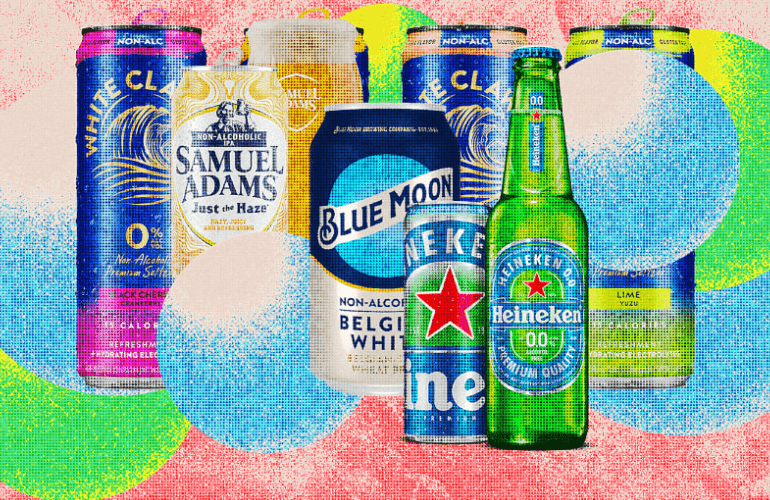New policies signal a major change for brands that have relied on ‘spray-and-pray’ techniques to drive sales.
We all know the pain of misguided sales spam—and lots of it—cluttering our inboxes. Whether it’s emails to our personal addresses that assume our buying habits of a decade ago are the same today, or sales pitches to our work addresses that are completely irrelevant to our roles and responsibilities, we’ve become overwhelmed with poorly targeted emails. Statista found that spam accounted for 45% of the 333 billion emails sent daily in 2022, while research from Gong shows that only 4% of emails are ever even opened.
Why are business leaders still accepting this antiquated and ineffective way of doing things?
This month marks the beginning of new policies from Google and Yahoo to limit the bulk email sends that result in billions of irrelevant and poorly crafted sales pitches emailed daily. This signals a major change for brands that have relied on “spray-and-pray” techniques to drive sales. And for B2B brands, this too should be a wake-up call.
- How will these new policies reshape how sales teams think about attracting customers?
- Will mass emails become generally unacceptable in our professional inboxes, in addition to our personal ones?
- And how will the disruption of a commonly used sales tactic impact bottom lines?
THE HISTORY OF SPAM
The first bulk emails were sent by Gary Thuerk, a marketing manager for a computer company, to promote the company’s products to some 400 people. Thuerk said in a 2007 interview that “complaints started coming in almost immediately” after sending the emails, but more importantly, the company “sold $13 million or $14 million worth of DEC machines through that email campaign.” With that, cold emailing as a sales tactic was born.
In the decades that followed, the practice grew, and email marketing tools enabled sales teams to contact an ever-growing list of potential customers, forsaking personalized outreach for a broader pool of recipients.
While more data-driven approaches to sales emails have been introduced over the years, the overwhelming volume of irrelevant sales pitches has led to widespread fatigue. In fact, Gong’s research found that 87% of buyers say that the emails they receive are not relevant to them.
This practice can convert to sales. Even if only 4% of bulk emails are opened, that translates to 40,000 people opening those emails for every million sent by a salesperson. But companies need to ask themselves if irritating and alienating the other 960,000 people is an acceptable sacrifice. And, even more importantly, are they missing out on valuable opportunities by not sending thoughtful, personalized messages to the appropriate buyers out there?
RETHINKING SALES SPAM WITH AI
The technology industry is at a pivotal moment. AI is transforming the ways we work, live, and interact with each other. Now bulk emails can be drafted by generative artificial intelligence far more quickly than by a marketing and sales pro.
The potential impact for teams sending out large email campaigns is significant. Will the rise of gen AI mean that inboxes are flooded even more? Can AI make a difference in how these companies communicate with prospects?
AI can also bring new knowledge and perspective. Using AI to draft emails based on a few lines of context isn’t new, innovative, or effective. But done right, it can actually help companies cut down on the volume, and instead target the right customers with the right message.
We’re seeing new applications of AI that capture and analyse customer interactions to create content and thoughtfully personalize outreach based on a holistic view of the relationship. These applications might be the new approach that could reshape how sales teams develop and assess their outreach programs, from the initial outreach to a prospective customer . . . and over the entire relationship.
The era of relying on volume over strategic precision is over.
AI as a blanket solution won’t solve this problem for businesses. Not all of these tools are created equally, and those without the proper knowledge will only exacerbate the problem. However, there is potential for well-designed AI tools to help teams change their approach.
HOW TO CREATE CHANGE
Google’s and Yahoo’s rules are a positive first step to end spray-and-pray practices, but sales teams will need to do more. The good news is that there’s a path forward that not only doesn’t harm the bottom line but also can improve it.
Business leaders need to stop accepting this practice as the status quo and rebuild these programs from the ground up. Teams have often been measured and evaluated on “activity metrics”—how many emails have been sent, how many phone calls have been made. They should instead be measured by meetings booked and qualified opportunities, giving sales teams the motivation, time, and resources to focus on targeted, relevant outreach.
Similarly, leaders should make sure that their teams haven’t become over reliant on email. Research from McKinsey shows that the number of channels that B2B companies use to interact with other businesses has doubled in the past five years, and includes email, phone, web conference, chat, and social. Leaders should ensure that their teams can meet those potential customers where they want to be met.
The onus is on business leaders to evolve their strategies. While a spray-and-pray approach may have worked in the past, the tides are changing, and to stay competitive, businesses need to take a step back and reimagine how their sales teams operate. And they need to do it soon, before their last emails go unanswered.
Feature Image Credit: 84 Video/Unsplash



BY AMIT BENDOV